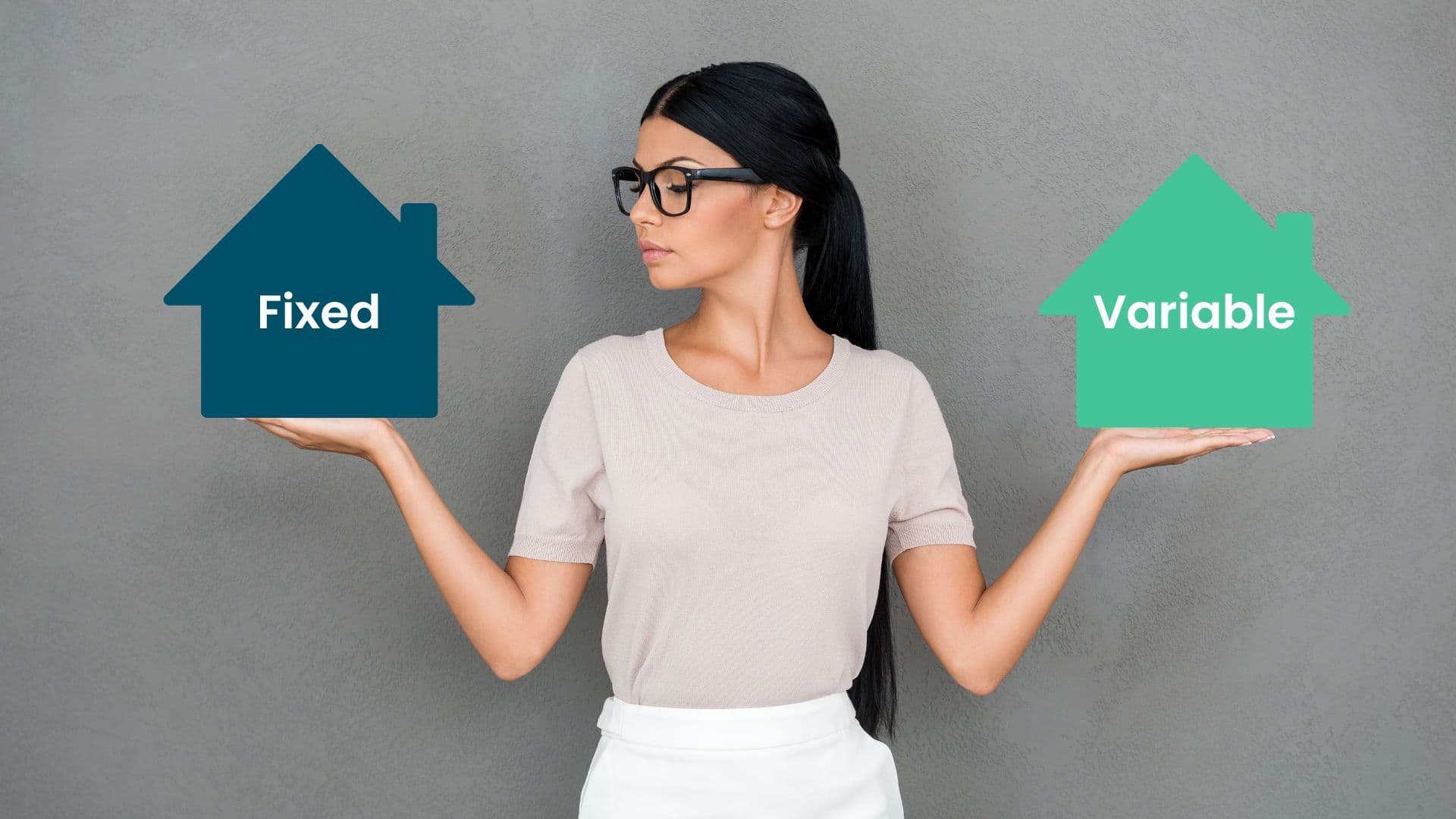Home Of Fair Facts & Tips
Fixed Vs. Variable Rate Home Loans: Find Out Which is Best
Explore your home loan options with our guide on choosing between fixed and variable rates to align with your financial goals and market conditions.

Choosing the right home loan is a critical decision for any prospective homeowner, but it can be particularly daunting where the options—and the stakes—are plentiful. One of the first and most fundamental choices you'll face is deciding between a fixed rate and a variable rate home loan. Each type has its distinct advantages and challenges, influenced by economic conditions, personal financial circumstances, and future goals.
A fixed rate home loan locks in your interest rate for a set period, providing predictability and security against rate fluctuations. Conversely, a variable rate loan adjusts with the market, offering potential savings when rates drop but posing a risk when they rise. Understanding the nuances of these options can empower you to make an informed decision that aligns with your financial strategy and long-term objectives.
In this article, we will delve deep into the characteristics of both fixed and variable rate home loans, examine the pros and cons of each, and provide practical advice based on various financial scenarios. Whether you're a first-time buyer or looking to refinance, this guide will help illuminate which option might be the best fit for your situation in the housing market.
Understanding Fixed Rate Home Loans
Definition and Basics
A fixed rate home loan offers the borrower a certain degree of security and predictability. The interest rate on the mortgage remains constant during the fixed rate period, regardless of changes in the market rates. This period can vary, commonly spanning 1, 3, 5, or even up to 10 years, depending on the borrower’s preference and the lender’s offerings.
Pros of Fixed Rate Home Loans
Predictability of Payments: The most significant advantage of a fixed rate loan is its predictability. Homeowners can budget with greater accuracy, knowing exactly how much they need to set aside for their mortgage payments each month. This can be particularly advantageous for first-time home buyers or families with tight budgets.
Protection Against Rate Increases: During volatile economic periods when interest rates rise, having a fixed rate ensures that your repayments remain unaffected. This protection can potentially save homeowners significant amounts of money compared to those on variable rates who will see their repayments increase.
Suitability for Budget-Oriented Planners: If you prefer certainty over the gamble of fluctuating rates, a fixed rate loan might be your best option. It provides a stable cost structure for your major household expense, allowing you to plan other investments and expenditures without worrying about rising mortgage costs.
Cons of Fixed Rate Home Loans
Limited Flexibility in Terms of Additional Repayments: One of the downsides of fixed rate loans is the limited flexibility they offer in terms of making extra repayments. Most lenders impose caps on how much extra you can pay per year, and paying off your loan early might incur hefty break fees.
Potential for Higher Costs if Rates Decrease: If the overall interest rates in the market decrease below your fixed rate, you'll find yourself paying more than what you might have on a variable rate. This scenario can lead to a feeling of missed opportunity, especially if the rate drop is significant.
Break Fees if the Loan is Exited Early: Exiting a fixed rate loan before the end of the fixed term can be costly due to break fees. These fees compensate the lender for the interest they will lose if you repay the loan early or switch to a different loan type or lender. These fees can sometimes amount to thousands of dollars, depending on the amount owed and the remaining term.
Understanding Variable Rate Home Loans
Definition and Basics
Variable rate home loans are a popular choice due to their flexibility and potential cost savings. Unlike fixed rate loans, the interest rate on a variable loan can fluctuate over the life of the loan, reflecting changes in the broader economy and official rates set by the Reserve Bank of Australia. This means that your monthly repayments may vary as rates change.
Pros of Variable Rate Home Loans
Flexibility in Repayments: One of the main benefits of a variable rate loan is the flexibility it offers. Most variable loans allow unlimited additional repayments at no extra cost, which can significantly reduce the total interest paid over the life of the loan and potentially shorten the loan period.
Potential Benefits from Rate Decreases: When interest rates fall, the payments on a variable rate loan can decrease too, which might lower the amount of interest you pay over the life of the loan. This can provide a great opportunity to reduce debt faster without changing the repayment amount.
Features like Offset Accounts and Redraw Facilities: Many variable rate loans come with features like offset accounts, which can reduce the interest you pay by offsetting the amount in the account against your home loan balance. Redraw facilities allow you to access any extra repayments you have made if you need cash in the future.
Cons of Variable Rate Home Loans
Uncertainty in Repayment Amounts: The biggest drawback of a variable rate loan is the uncertainty it brings. If interest rates rise, so do your repayment amounts, which can disrupt your monthly budgeting and long-term financial planning.
Risk of Rate Increases Impacting Budgets: For homeowners on a tight budget, a sudden increase in interest rates can result in financial strain, as the higher repayments may not be immediately affordable.
Planning Challenges for Risk-Averse Individuals: If you prefer stability and predictability in your financial obligations, the fluctuating nature of variable rate loans might pose a challenge. The unpredictability of interest rates can make it difficult to plan and budget effectively over the long term.
Comparing Fixed and Variable Rate Home Loans
Scenario Analysis
Choosing between a fixed and variable rate home loan depends significantly on your financial situation, goals, and risk tolerance. Let's explore a few common scenarios:
Stable Income Earners:
- Fixed Rate Loan: Ideal for those who prioritise budget certainty and plan to stay in their home for the entire term of the fixed rate.
- Variable Rate Loan: Could work for those willing to gamble on rate decreases for potential savings, but this could be risky if budget certainty is a priority.
Fluctuating Income Earners:
- Fixed Rate Loan: May pose challenges if the income decreases, as the fixed payments might become burdensome.
- Variable Rate Loan: Offers the flexibility to make more significant payments during high-income periods and benefit from potential rate decreases.
Long-Term Planners:
- Fixed Rate Loan: Provides the peace of mind of fixed repayments, facilitating long-term financial planning.
- Variable Rate Loan: Could offer savings if interest rates trend downwards long-term, but the unpredictability may complicate planning.
Advice from Financial Experts
Experts often suggest that the choice between fixed and variable should consider both current economic conditions and personal financial circumstances. For instance, in a low-rate environment, locking in a fixed rate might save you money if rates are expected to rise. Conversely, if rates are high but projected to fall, a variable rate might be advantageous.
Decision-Making Factors
To make the best decision between a fixed and variable rate home loan, consider the following:
- Financial Goals: Are you looking to minimise risk or maximise savings?
- Risk Tolerance: How do market fluctuations affect your peace of mind?
- Loan Duration: Short-term homeowners might not benefit from a fixed rate as much as those who plan to stay put.
- Economic Outlook: Keep an eye on rate trends and economic forecasts.
Conclusion
Choosing between a fixed and variable rate home loan isn't just about comparing numbers; it involves understanding your financial landscape, personal preferences, and market conditions. By carefully considering your financial goals, you can select a mortgage product that aligns with your life plans and financial health. Always consider consulting with a financial advisor to get personalised advice suited to your specific circumstances.
Frequently Asked Questions
What happens if I choose a fixed rate but rates go down?
You will continue to pay the agreed-upon rate, potentially more than if you had a variable rate. However, the stability might be worth the extra cost depending on your circumstances.
Can I switch from fixed to variable rate, and what are the costs?
Yes, switching is possible, but it often involves break fees that can be substantial, depending on the terms of your agreement and the timing of the switch.
How often do variable rates change?
Variable rates can change whenever the Reserve Bank of Australia adjusts the official cash rate, or lenders adjust their rates in response to market conditions.
Are there any government regulations affecting these rates?
Government policies and economic measures can influence interest rates, such as changes in the official cash rate or regulatory measures aimed at controlling lending practices.
Disclaimer: Unless otherwise specified, the opinions expressed in this article are strictly for general informational and entertainment purposes only and should not be taken as financial advice or recommendation. Views are subject to change without notice at any time.
Written By

The Craggle Team

